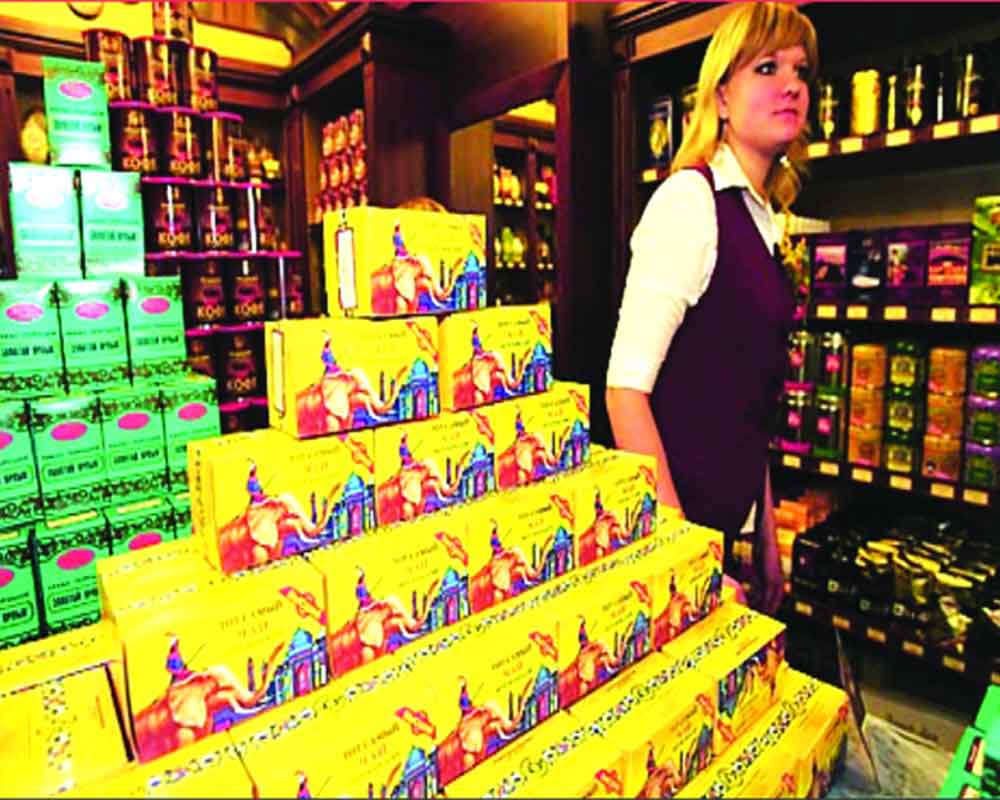Since the turn of the last century, the export volumes of Indian tea to the erstwhile USSR have experienced highs and lows on several occasions
For nearly 30 years, Indian producers enjoyed the incidental generosity of the Soviets. ‘Incidental’, because the rouble was valued low. In 1991, the RBI treated the rouble as worth Rs 18 whereas it was not worth even 28 paise. With the collapse of the USSR and the end of the rupee trade, Indian tea exports had declined by one-third. The result was a slump in prices, hopefully to not last long. It should be interesting to pursue this nostalgia further back and recount the highlights of the Indo-Russian trade.
1897 was a year of anxiety in Indian tea exports to Russia. Plague had broken out in the country and import of Indian tea into Batoum, Georgia, was prohibited. Calcutta made a timely intervention and
persuaded Russians to recognise that tea is no carrier of plague. In 1903-04, nearly 29,000 pounds of tea were exported from Bombay to Russia.
Two years later, the quantity had trebled.
About this time, it was discovered that lately there was a strong bias in Russia in favour of land-borne teas and they realised higher prices than their sea-borne counterparts. Nevertheless, the Indo-Russian trade continued to grow. A British report from Odessa said the Russian tastes had undergone an extraordinary change in the last decade. His preference had swung from China to Indian and Ceylon tea. Purchases from China had declined by one-third.
The consular report went on to add that there had been a steep rise in the demand of green tea between 1904 and 1912; imports had grown by nearly 20 times. The Central Asian provinces had taken to green tea as a kind of substitute for intoxicants, which were forbidden by Islam. A whole new market, over and above that of black tea, had been created. When everything was hunky-dory, WWI ended and there was a general recession, the crash in tea prices was unprecedented. Between 1919 and 1920, the price for common teas had dropped to one-third. This slump was attributed to the Revolution in Russia. Imports by this consumer had stopped all together.
In due course, the Soviet Union resumed imports on a limited scale. A big enough alternative home had not however been found for the surplus tea even a decade later. The annual imports by this country in 1930 ranged around 60 million pounds when contrasted with the pre-war figure of 200. Too much was therefore being shipped to Britain, causing a continual indigestion there. Trade circles felt that to save the industry from ruin, an urgent outlet for up to 100 million pounds had to be found. The Capital of July 2, 1937, reminded that the USSR was the obvious home for this surplus. And this country was willing to import more, provided it was granted long-term credit. Apart from relieving the glut, the worry was of generations growing up in Russia without the tea-drinking habit.
The Ceylon Association was reported in October 1931 to have turned down the proposal to extend two years’ credit to Russia. The reason was that a single Soviet agency bought all the tea. In the event of a default, the loss would be total. Meanwhile, negotiations between the producers and the Soviet Government had been going on. The purpose was to ensure continuity of sales of black tea to Russia. The supply was plentiful and the Soviets were keen to buy; the missing link was money. It was finally in July 1934 that a tentative scheme of credit was reported. A trading company was to be formed by the producers of India, Ceylon and the Dutch Indies. The main producers of these countries were to subscribe to the share capital of the company on the basis of £3,750 per million pounds of tea grown. £938 were payable in cash and £2,872 were to cover any default by the Soviets.
The joint company was to be known as the Anglo-Russian Tea Trading Company which would buy tea for cash at the auctions in London, Colombo, Calcutta and Amsterdam and sell it in Russia on 12 months’ credit. Those hopes dashed to the ground when the negotiations were suddenly suspended. In June 1944, it was reported that the Soviet Union had received more than 35 million pounds of Indian and Ceylon tea through the British Ministry of Food. The trade therefore wondered whether the Russian market might be reopened. The Manchester Guardian opined that there was a bigger opportunity after the war for re-developing the Russian market.
On July 12, 1948, in New Delhi, the first Indo-Russian food agreement was signed. India would receive 50,000 tonne of wheat. In return, it would supply 11.5 million pounds or 5,000 metric tonne of high-grade tea. Some in the trade felt that this would put Indian tea at a disadvantage in the hard currency markets. This conflict between barter and hard currency trade increased as the volume of trade with the Soviet Union went up. In the agreement signed in 1949, 200,000 tonne of wheat and 100,000 tonne of food grains were to be exchanged for tea, jute and castor oil.
(The writer is a well-known columnist, an author and a former member of the Rajya Sabha. The views expressed are personal.)


























